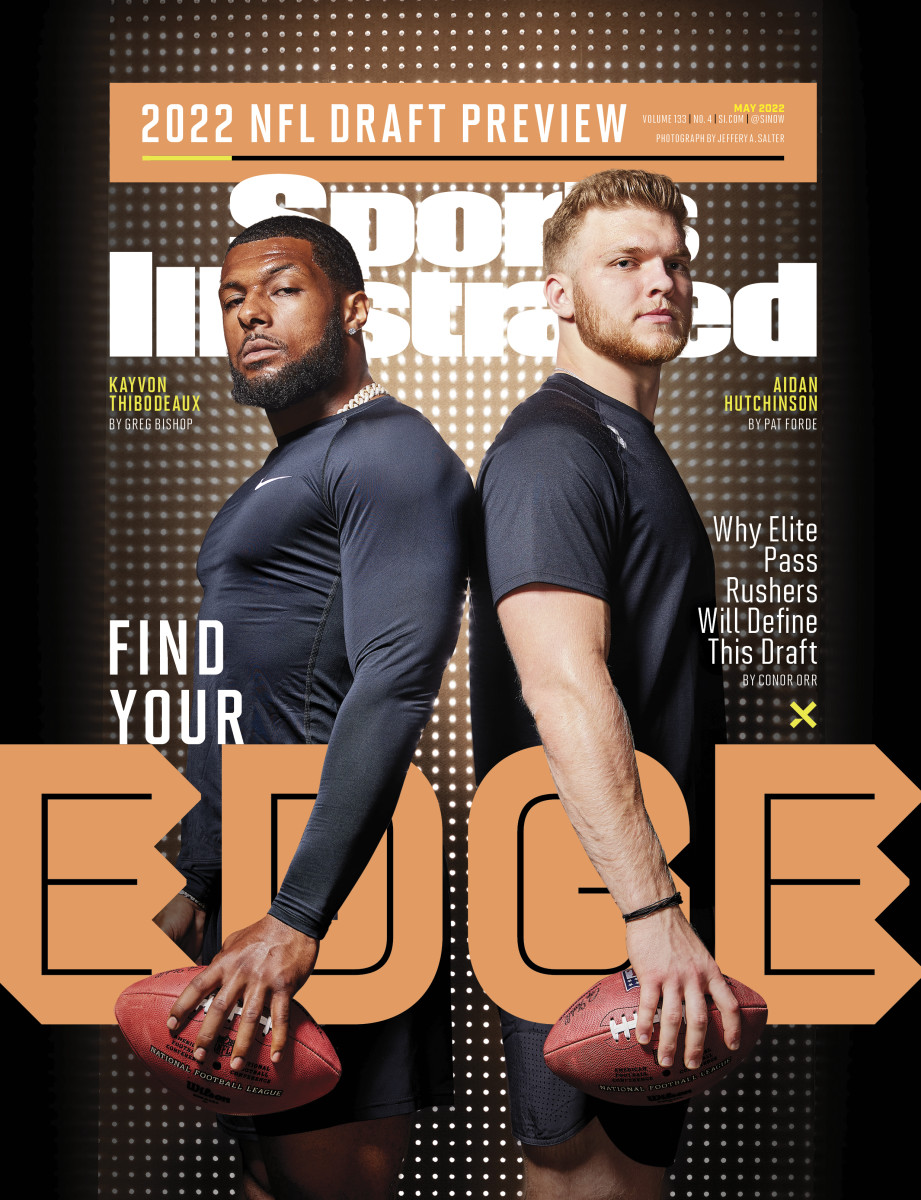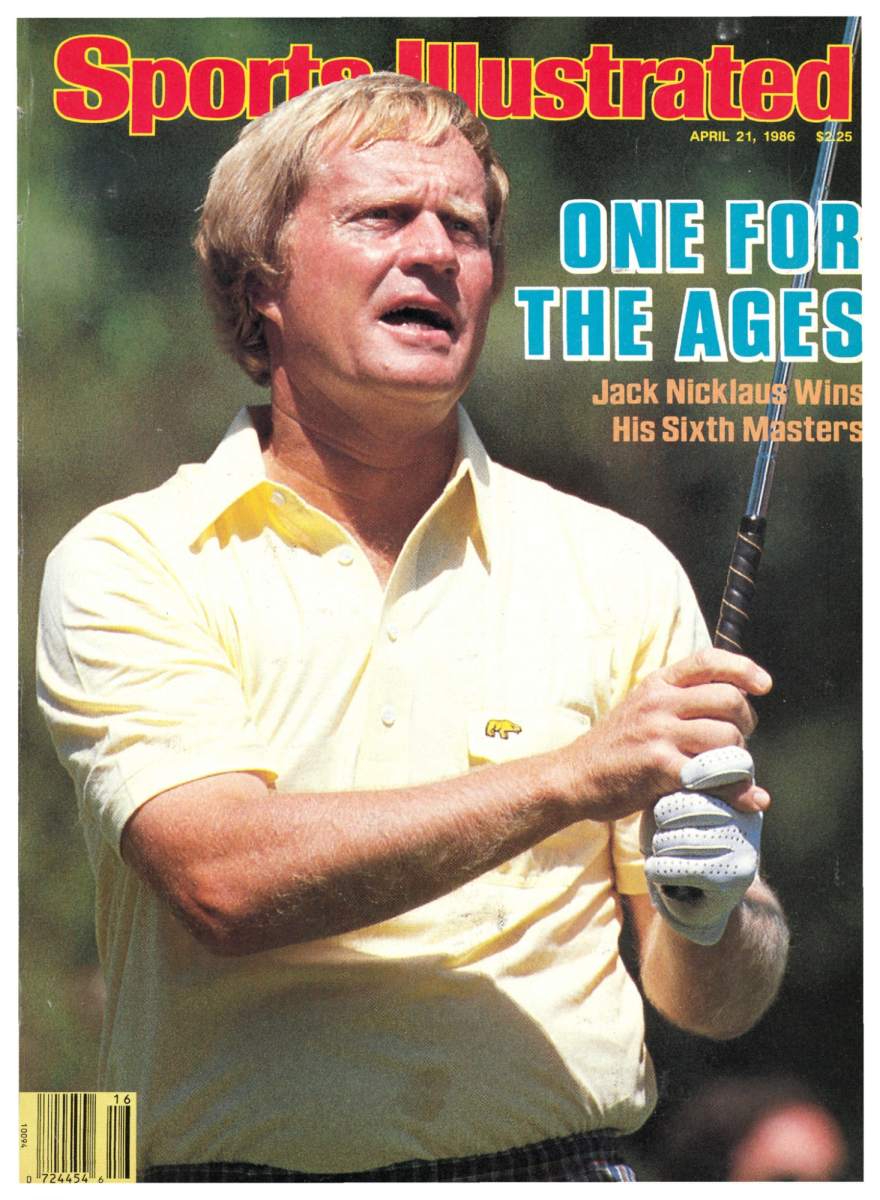SI:AM | This NFL Draft Will Make Life Hell for QBs
Good morning, I’m Dan Gartland. I really hope one of these guys falls to the Giants.
If you’re reading this on SI.com, you can sign up to get this free newsletter in your inbox each weekday at SI.com/newsletters.
The QB stoppers

Much of the discussion ahead of next week’s NFL draft has focused on the apparent lack of top-tier quarterback prospects available. But even without this year’s version of Trevor Lawrence on the board, it looks like teams are still going to be able to find franchise-altering players at the top of the first round.
The NFL revolves around quarterbacks, but finding the next Patrick Mahomes or Aaron Rodgers is next to impossible for most teams. That’s why, as Conor Orr explains in today’s Daily Cover, teams have instead decided to focus on making life hell for opposing quarterbacks. But in an offense-friendly era ruled by athletic passers, harassing the quarterback with blitzes isn’t the best strategy because it allows him to find the holes in the defense vacated by the extra rushers. Thus the importance of the stud pass rusher who can wreck the pocket as part of a four-man rush.
“In 2021, blitz atheism was more widely adopted. The Chiefs’ offense sputtered for half the season—and fell in the AFC title game to a Bengals defense sometimes featuring that three-man rush—as Mahomes became one of the least-blitzed quarterbacks in football last year. He saw an extra pass rusher roughly seven times per game; Rodgers saw only eight blitzes per game.”
For that strategy to work, you need a player on the edge who’s capable of being a sort of one-man blitz. Good thing there are two such players at the top of this year’s draft. Michigan’s Aidan Hutchinson and Oregon’s Kayvon Thibodeaux could very well be the top two picks in the draft.
Hutchinson, Pat Forde writes, rose up draft boards after a stellar senior season at Michigan in which he had 14 sacks and finished second in Heisman voting. Teams love his diligent work ethic, but that can also be something of a knock against him.
“There is just one problem with being a 100-percent guy. It comes with the perception that success is due solely to effort. It suggests a compensation for lack of physical talent. This was the context surrounding Hutchinson heading into the NFL combine—a reliable prospect but perhaps not a spectacular one.
“He was considered to have a higher floor and lower ceiling than some other players. Nobody was comparing him athletically to freaks such as the Bosa brothers, Myles Garrett, Jadeveon Clowney or Von Miller.”
On the other side of the spectrum is Thibodeaux, who was 6'3" in sixth grade. He was at one point the presumptive No. 1 pick. Now, there are questions about where he’ll fall, but, as Greg Bishop writes, not all of them are well founded:
“In draft profiles, experts rate Thibodeaux’s strengths the same as ever: size, length, explosiveness, balance, twitch. Only now, after his college career, new ‘weaknesses’ have changed the conversation: raw, hand technique, ankle flexibility, too easily baited. ‘Typical bulls---,’ says a prominent AFC talent evaluator in defense of Thibodeaux, his candor exchanged for anonymity. ‘I wouldn’t draft him,’ says an NFC general manager who most definitely would, depending on when.
“How Thibodeaux ‘fell’ from the presumed No. 1 pick to somewhere lower starts there, with perceived flaws grounded in film study. What’s odd is that none of the evaluators called his college coach, Mario Cristobal, according to another direct source—Cristobal himself.”
Based on his discussions with people around the league, Albert Breer’s best guess is the Jaguars will take Hutchinson with the first pick while Thibodeaux falls to the Giants at No. 7. We’ll find out a week from today in Las Vegas where they land, but wherever they go, quarterbacks better watch out.
Meanwhile, in the NBA ...
All three of last night’s Eastern Conference playoff games were outstanding. Here’s what happened.
The Celtics are up 2–0 over the Nets after winning 114–107. Boston’s league-best defense clamped down on Brooklyn’s two star players. Kyrie Irving managed only 10 points on 4-of-13 shooting, while Kevin Durant was 4-of-17 from the field (but 18-of-20 from the line) as he scored 27 points. Bruce Brown (23 points on 8-of-12 shooting) and Goran Dragić (18 points on 8-of-14 shooting) picked up the slack. The Celtics, meanwhile, had seven players in double figures.
The second game of the night was the best, as the 76ers knocked off the Raptors in overtime to go up 3–0 in that series. James Harden fouled out with 27 seconds left in regulation, but Tyrese Maxey and Joel Embiid took over in OT. Embiid hit two shots in the extra period that I’ll be thinking about for a while. The first was this fadeaway from the free throw line to put Philly ahead with 2:36 left. The second was his leaning three-pointer with less than a second remaining to win it. (You can watch the final 3:25 of overtime here.)
In the last game of the night, DeMar DeRozan took over for the Bulls as they beat the Bucks to even that series at a game apiece. He had 41 points to lead all scorers. The Bulls looked like they had the game wrapped up early in the fourth quarter when they extended their lead to 16, but the Bucks came storming back. (They also led by 18 early in the third before Milwaukee cut the lead to three with a minute left in the quarter.) With the clock ticking past 20 seconds remaining in regulation and Chicago clinging to a three-point lead, DeRozan put the game on ice with a clutch layup.
The best of Sports Illustrated
Jay Wright’s abrupt retirement took men’s college basketball by surprise, Pat Forde writes. … Rohan Nadkarni argues the Suns have no reason to panic after Devin Booker’s injury, because the players tasked with replacing him have meshed well before. … Jon Wertheim writes that Wimbledon’s unilateral decision to ban players from Russia and Belarus sets a dangerous precedent. … Kevin Sweeney grades the biggest coaching hires made in men’s college basketball this spring. … PSG’s relentless pursuit of Champions League glory has turned Ligue 1 titles into an unfortunate afterthought, Avi Creditor writes.
Around the Sports World
The A’s set a record for low attendance for the second game in a row. … Devin Booker’s hamstring injury is reportedly considered mild, and the Suns aren’t ruling out a return during the first round. … A former Zamboni driver for the Red Wings filed a lawsuit alleging he was fired for peeing into a drain inside the arena. … Deebo Samuel has told the 49ers that he wants to be traded, according to ESPN’s Jeff Darlington. … The Yankees’ unvaccinated players have reportedly all gotten the shot ahead of their trip to Toronto next month. … A 911 call from Dwayne Haskins’s wife indicates he was walking on the side of the highway because he needed gas before he was struck and killed.
SIQ
Between Clayton Kershaw and Roki Sasaki, perfect games have been a big topic of conversation over the past week, which makes this a perfect time to talk about Philip Humber’s perfect game. On this day in 2012, Humber, pitching for the White Sox, threw a perfect game against the Mariners. Humber had been a hyped prospect for the Mets, having been selected third in the ’04 draft but failed to live up to the hype. In 2008, the Mets traded him and three other prospects in exchange for which player?
Yesterday’s SIQ: Whose record did Michael Jordan break when he set the NBA’s single-game playoff scoring record with 63 points?
Answer: Elgin Baylor, who had 61 points in Game 5 of the 1962 NBA Finals against the Celtics.
While Baylor’s big game came before the NBA used the three-point shot, Jordan’s came before he personally discovered the three-pointer. It was MJ’s second season as a pro and he attempted only an average of one three per game. He didn’t take any during that game against Boston. He made 22 of 41 shots from the field and 19 of 21 from the line.
The 63 points were, to that point, a career high, surpassing his 49 points as a rookie in 1985. The ’85–86 season was a focal point in ESPN’s documentary The Last Dance. Jordan broke his foot in the third game of the season and missed 64 games but successfully lobbied Bulls doctors and ownership to return for the stretch run and helped Chicago squeak into the playoffs at 30–52. While they were swept 3–0 by the eventual champion Celtics in the first round, Jordan stood out, averaging 43.7 points per game.
Jordan’s 63 points stand as a record for a single playoff game to this day, though two players have made runs at the mark in recent years. Damian Lillard dropped 55 in a double-overtime loss to the Nuggets in the first round last year, and Donovan Mitchell had 57 in 2020 in an overtime first-round loss to the Nuggets.
From the Vault: April 21, 1986

When the 1986 Masters began, Jack Nicklaus was an afterthought. He was 46 years old, six years removed from his last major championship and 23 years removed from his first win at Augusta. He hadn’t won on tour in two years, was 160th on the money list and had missed the cut at three of the seven tournaments he’d played in that year (and withdrawn from a fourth).
He wasn’t even much of a factor after the first two rounds, sitting at one-over through 36 holes. But Nicklaus shot a three-under 69 in the third round to move into a tie for ninth, four shots behind the 54-hole leader, Greg Norman. It would take the round of a lifetime on Sunday for Nicklaus to win his sixth green jacket.
“My son Steve called me at the house we're renting this morning,” Nicklaus said after his round, “and he asked me, ‘Well, Pop, what’s it going to take?’ And I said, ‘Sixty-six will tie, and 65 will win.’ And he said, ‘Well, go ahead and do it.’”
Nicklaus’s final round 65 was enough to win the tournament by one stroke over Norman after the Australian bogeyed the final hole and American Tom Kite. It was Nicklaus’s 18th and final major championship. (It was considered at the time to be his 20th major, but the definition has since evolved to exclude the two U.S. Amateur Championships that he won.)
The story accompanying the cover is Rick Reilly at his finest. I’ll just toss out a few of my favorite lines:
- “Everybody genuflect. It’s Sunday morning in the cathedral of golf, and the high priests are all here.”
- “With pandemonium all around him, Norman chose to hit a three-wood from the 18th tee. The shot was fine and straight, except that it left him holding his four-iron, which in Norman's hands lately works about like a waffle iron.”
- “The $144,000 for winning the Masters means he’s up to $148,404 for the year. Nicklaus goes through more than that in limo tips.”
- “The man is older than Pete Rose, for crying out loud. He has played in more Masters (28) than [Corey] Pavin has lived years (26). When Nicklaus won his first Masters, in 1963, Norman was eight years old, [Seve] Ballesteros and [Bernhard] Langer five. Nicklaus either signed his soul away or is angling for an endorsement contract with Efferdent.”
Check out more of SI’s archives and historic images at vault.si.com.
